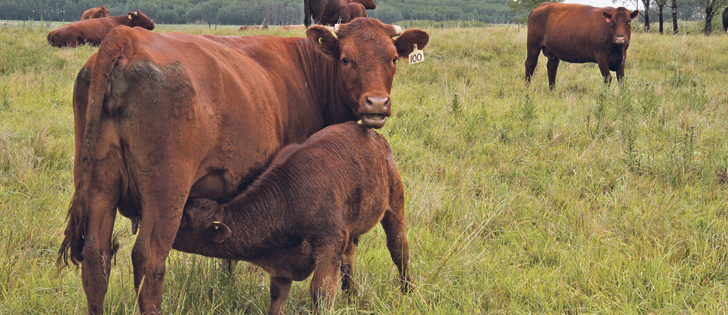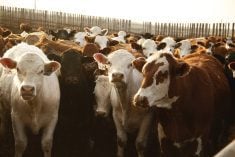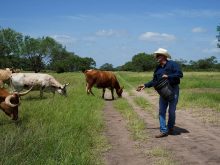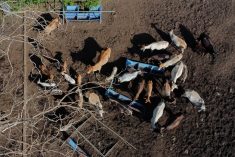When we think of bovine respiratory disease in beef cattle, we often think of the “shipping fever” pneumonias that occur in weaned calves shortly after arrival in the feedlot.
Respiratory disease is the most common cause of death of feedlot cattle, and a great deal of research has been focused on the disease at this stage of production.
However, BRD is also the most common cause of death for nursing beef calves older than three weeks, and much less is known about the syndrome in this age class.
Read Also

Petition launched over grazing lease controversy
Battle continues between the need for generation of tax revenue from irrigation and the preservation of native grasslands in southern Alberta rural municipality.
Researchers from the Meat Animal Research Center at the U.S. Department of Agriculture’s Agricultural Research Service tracked the annual incidence of BRD in pre-weaned calves in its research herd.
Over a 20-year period, the annual incidence varied from a low of three percent to a high of 24 percent with an overall annual average of 11 percent. On average, the mortality rate of calves suffering from pre-weaning BRD was 13 percent.
A research team led by Amelia Woolums surveyed cow-calf producers from three eastern states (Florida, Georgia and West Virginia) and from three plains states (Iowa, Kansas and Nebraska) in an attempt to learn more about this poorly understood disease.
One out of every five herds re-ported having had some calves with respiratory disease before weaning, and almost half of these herds with pre-weaning BRD cases reported having at least one calf die from BRD pre-weaning.
The most common age group reported as having BRD represented calves that were one to four months old.
The survey included questions on a wide variety of management practices, and the research was able to identify a number of risk factors associated with the occurrence of pre-weaning BRD.
Larger herds were more likely to have calves affected with pre-weaning BRD.
The occurrence of diarrhea in the calves and respiratory disease in adult cows was also associated with the occurrence of pre-weaning BRD.
Diarrhea in calves may be related to a lack of colostrum intake, which is a predisposing factor to many infectious diseases in calves, including pneumonia and diarrhea.
Diarrhea has also been shown to be associated with the development of respiratory disease in dairy calves. Control of diarrhea in beef herds by ensuring adequate colostral intake and through environmental management may also help to control pre-weaning pneumonia.
When Woolum’s research team examined the incidence of pre-weaning BRD in these herds, they were able to identify a number of other risk factors, including introducing calves from outside sources, feeding of creep feed to nursing calves and the use of estrus cycle synchronization programs for cows or replacement heifers.
Introducing calves from outside sources is an obvious biosecurity risk because we may be introducing calves carrying a variety of respiratory disease pathogens into the herd.
Bringing young calves into the herd also brings the risk of introducing bovine diarrhea virus into the herd. This virus can infect other calves and cause severe immune system suppression, making calves more prone to pneumonia or other infectious diseases.
A number of the outbreaks of pre-weaning BRD that I have investigated have been related to the introduction of purchased calves that were infected with BVD virus.
Feeding creep feed and using estrus synchronization programs can be potential risk factors for bovine respiratory disease in pre-weaned calves because they may bring more contact between calves in the creep feeding area or during confinement while management procedures are carried out.
Producers who use these management procedures may actually increase the opportunities for disease transmission between calves or from cows to calves.
The researchers emphasized that both creep feeding and estrus synchronization programs are useful management tools and that modifying calf-handling practices or increasing the strength of immunity of calves through appropriate vaccination programs might help to lower the incidence of disease in herds that use them.
John Campbell is head of Large Animal Clinical Sciences at the University of Saskatchewan’s Western College of Veterinary Medicine.















